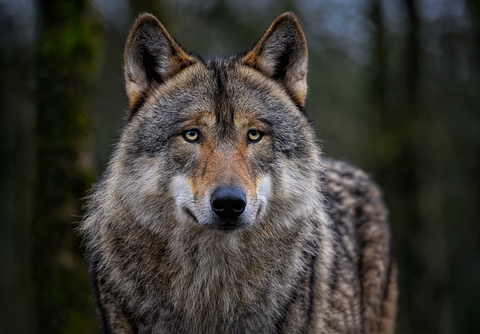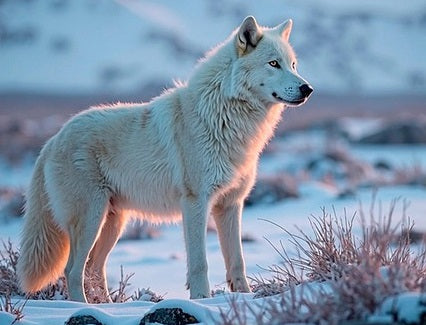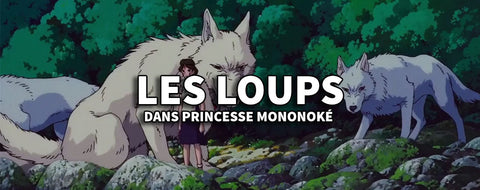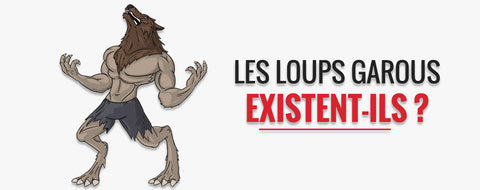
The wolf: the brother of the Native American
of reading - words
The wolf and Native American man have been linked by a very strong bond since the dawn of time. This relationship has its origins in the fact that the life of both follows a system very close to nature.
The wolf and the Native American share a very similar way of life, which has created a beautiful bond between them. This is what we will discover in this article.

An overview of Native American culture
Native American culture is deeply connected to nature and its ecosystem. These people live in perfect symbiosis with nature, to which they feel grateful for providing them with the essential amenities to survive and develop their clans.
The life of Native Americans is based essentially on dances and rites and above all it integrates several symbols, the most famous of which is the dreamcatcher . This original object is composed of a canvas woven on a wooden hoop, with natural fibers and feathers attached to the hoop.

The dreamcatcher is used as a filter net that traps bad dreams in its web while letting positive energies pass through. Nightmares will evaporate at sunrise. However, good dreams travel a path through the web until they reach the feathers. These then direct them to the recipient, who is lying beneath.
Discover this wolf head dreamcatcher mystical and powerful.
The symbolism of the wolf among Native Americans
Like the wolf, Native Americans (or American Indians or indigenous peoples) lead a life very close to that of this wild animal. They live in clans and feed on fishing, gathering, and hunting. Both have a way of life that respects nature and preserves its resources.
The strong union between wolves and natives is manifested in several aspects:
- the wolf ritual that the Indians teach their children under the pretext of becoming men.
- The Wolf Dance or "Klukwana": is a ritual that triggers the sacred season of winter, where the Indians bond with their spirits. Also, it is during this period that the ancestors transmit their knowledge to their children, in the form of sacred stories. They instill in them the values that the chiefs of their tribes learned from the wolf, notably through songs and dances (with a disguise in the image of this animal).

The wolf greatly inspires the Native American, for whom he swore respect and loyalty, and considered him a brother or equal to man. This can be explained by several reasons:
The powerful profile of the wolf
Among the natives , the wolf represents power, loyalty, ferocity, intelligence and fidelity. In fact, the wolf remains faithful to his she-wolf for his entire life.
For Native Americans, this animal symbolizes:
- Strong instinct : The wolf is endowed with unparalleled malice and instinct. This is evident in its hunting rhythm and in the way it creates and chooses the location of its habitat.

Dreaming of a wolf indicates that this spirit animal is a sign of an omen, which can be good or bad, depending on the species that appeared in the dream.
- Loyalty : It is recognized for its social and protective nature, its strong group attachment, and its loyalty. In fact, the wolf remains faithful to its female wolf for life.
- Freedom : The wolf is characterized by its thirst for freedom and independence. Its profile encourages people to live life to the fullest, guided by their intuition and instinct.

The social life of the wolf
The wolf moves and lives in packs. The strong social hierarchy that dictates relationships within the pack and the way wolf pups are raised are benchmarks for this people.
The wolf: master of the hunt
The wolf represents the profile of a warrior and skillful hunter who impressed the native tribes with his unparalleled courage and strength in combat.
The Wolf and the Native American: Brothers in Pain

Colonization was a common source of pain for both Native Americans and wolves. Before European colonization, the Native American population was present throughout virtually the entire American continent: in the Caribbean, the north, central, and south.
From the 15th century onwards, colonization led to the devastation of the Amerindian people, who were cruelly expelled from their territory. This dramatic event caused the massacre of 56 million people in a hundred years .
The gray wolf was also the victim of eradication campaigns, under the pretext of its violent predation of livestock, which engendered the fury of breeders.
Several commonalities have linked the wolf and the Native American people, who have been able to highlight their characteristics in a unique way. Visit our site to discover our articles that highlight this strong alliance between the wolf and the Native American: Indian wolf stickers, Indian wolf paintings , etc.





Chantal Gélinas
Merci pour la belle présentation sur le loup
Christelle
Je vous remercie pour votre éclairage sur le loup, qui a répondu à mon questionnement.
Douces énergies à vous
Christelle